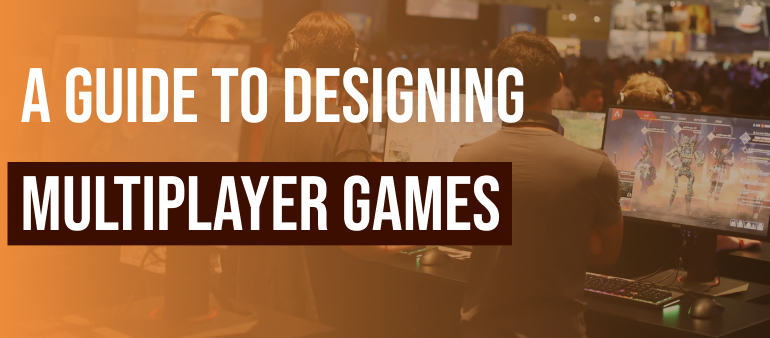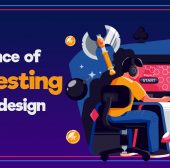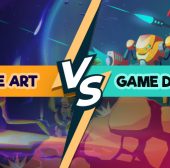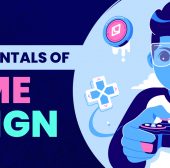The Demand for Multiplayer Games
There is a great demand for multiplayer games and it is the tech experts, creative thinkers, and game designers who have made them what they are today. There are a variety of reasons that have contributed to the popularity of this genre of games and the most noteworthy of them all is the kind of social interaction it offers to the players. The players can interact with one another about their interests and passions which provides them with a sense of community. This kind of a powerful draw lets the users make friends and build relationships by communicating about their shared experiences in the game. The other aspect is the competitiveness that this category of games brings to the players through leaderboards and rankings. The competition seems to be extremely satisfying and thrilling for the players. In addition to that, there is a range of gameplay that multiplayer games offer including game modes, characters, maps, and more, keeping the players interested and engaged throughout. In all, the exciting experience that comes with multiple players gaming together comes from no other and there are various elements that support that kind of experience and that type of gaming.
Important Aspects Behind Designing a Multiplayer Game
The rising demand draws the majority of game developers' focus toward creating more such games. Let’s elaborate on how multiplayer game design isn’t as simple as just throwing together some mechanics and calling it a day. There are key considerations that go into creating one, such as -
Balance
When we talk about balance in game design, it involves creating a balance in elements such as fairness, win-loss conditions, game states, economy balancing, difficulty levels, and others in a way that can contribute towards improving the gaming experience of the player. In multiplayer games, there is a concept called meta which are different strategies used by gamers against one another outside of the game. By playing the game, again and again, the strategies that win the game are identified which creates an unbalancing in the game. Here, the game is overpowered (OP) by the strategies and calls for a balanced approach for individual players involved in the game. Nerfing is a change implemented in case a character or aspect of gameplay tends to show an overpowering nature. It is important that such an anomaly is identified and corrected to achieve a greater competitive balance in the game. Similarly, Buffs are the kind of changes that are made when certain features or video game mechanics need to be tweaked to make them significant in the game. While there is a lot of maths that goes into game balance, the basics include understanding the analytics that covers the aspects like character’s potential moves, move set, buffs, special abilities, etc. by referring to statistics like graphs, matrices, hypothesis testing, and other dry statistical data. Then this understanding can be used to ensure that no element of the game overpowers any other aspect and that the symmetry of the gameplay is maintained.
Accessibility
Video games and products must be more accessible - including the segment of the population that experiences situational, temporary, or permanent impairment. Any unnecessary barrier must be avoided that prevents such people from accessing and enjoying a game. There are game accessibility guidelines that help avoid such barriers. By creating a balance between reach (the number of people who benefit), impact (the difference made to those people), and value (cost to implement), the guidelines can be achieved at different levels of the multiplayer game development process. And now, there are Accessibility features that can be added to the game settings like captions, color blindness, co-pilot mode, speed adjustment, skip levels, and more to assist the players. Making games more accessible not only increases the game base but allows game app developers to create better games and help players to improve their social space and quality of life.
Matchmaking
In multiplayer games, players are grouped for online play sessions through matchmaking. There are certain factors based on which players are matched - location, skill level, and wait time. The balance between these three aspects results in a fair experience for all players. Fair matchmaking ensures competitive matches and variety in game configurations. Matching on the basis of skill levels makes sure that players with similar abilities play against each other. Also, Playlists are another way of matchmaking in highly configurable games where play fields are segregated in accordance with similar game types offering players the choice to select the type of game they would like to play.
Social Features
Social Features in video gaming increase user engagement levels by providing a sense of community and belonging to the players. Features like activity feeds, in-game chats, push notifications, guilds (groups of gamers), and more creates a sense of competitiveness among players, improve retention, and keep the gamers motivated through in-game rewards. Adding social elements.
Monetization
Some of the popular methods of monetization include in-game ads, in-app purchases, paid games, rewarded video ads, data monetization, subscriptions, and player trading. These strategies of revenue generation from the games can be used individually or in combinations - anything that suits the game owner.
Multiplayer Game Design - A Walkthrough
So, before designing a multiplayer game, it is vital to make a strong base first. You can follow these steps to design a multiplayer game.
Develop an Interesting Game Concept
Not all have a good understanding of creating a game concept and the considerations that go into making one. It involves the genre, niche, style, storyline, features, look & feel, and other elements of the game. Once you have clarity on all those aspects of the game says that you have a full-proof idea that is ready to be worked upon.
Multiplayer Network and Server Models
In multiplayer games, the network models include the architecture and design that sets up the communication between the source of information and destination between a client and server, or between peers. Two popular host servers to choose from are the Peer-to-peer Model (P2P) and Client-server Model. While the P2P model involves players directly connecting with one another, the central server architecture is where a server hosts the game logic and sends information to the client. The Server Models are either client-hosted, P2P or there is a Dedicated Game Server (DGS) and the right server model is chosen based on the genre of the game and other factors like latency, players per session, precision, cost, cheat mitigation, lock-in, etc.
Create a Game Design Document (GDD)
The information about what the game is and what resources will be required to create it must go into the comprehensive game concept that is designed into a Game Design Document (GDD). A GDD not only ensures that all information is in one place but also makes sure that everyone involved in the making is also on the same page with that information. It must include the idea, genre, story and characters, core game mechanics, gameplay, level and world design, art and/or sketches, monetization and the game marketing strategy. Keeping a record of all the details will help you stay organized, identify potential risks, and allow you to stay ahead of time. Once the game concept is in place, it should be investigated and validated by creating a proof of concept (POC). This helps the team assess the technical viability, feasibility, limitations, and financial implications of the game idea. Once the POC is given a go ahead, the writers, game artists, designers, developers, engineers, QAs, and others collaborate and understand the technological constraints, ensure consistent visuals, color palettes, and art styles, and elaborate on the in-game mechanics, physics, and how objects will render on a player’s screen.
The Basic Game Design Principles
The principles of Game Design involve art and science that focus on ensuring a good experience for the player. Some key points to focus on are mentioned below and hopefully, help improve game design.
- The object of focus - Provide a primary focal point to the player, never make them have to predict what they need to focus on while playing the game, and make them realize they were wrong this time. And it is the designer’s job to provide that clarity when it comes to plot points and objectives in the game through the visual and visceral aspects of the gameplay.
- Anticipation - Inform the player about the action before it is about to happen through behavior or sound effects, for instance, a lightning sound before the rain or the moving of grass before a helicopter/chopper arrives.
- Announce changes - The player should be aware of the changes (rare and less frequently happening in the game) at the correct time and correct event through visual cues.
- In-game Behavior - Every action, reaction, and emotion in the game must occur according to the expectations of the player and must satisfy their subconscious acceptance test. This behavior should be justified through elements and actions at various levels to make gameplay and story look more believable.
- Maintain Game Dynamics and Physics - If there is only one change occurring at a time in the game, the dynamic is lost. It is important to ensure that the right number of events occur at the right time keeping in mind gravity, force, density, buoyancy, etc. The dynamics and the physics should be logical and should make sense to the player.
- Player and the Environment - A player’s interaction with the game environment and the assets plays a major role in making a game a hit. Orchestrating progression for the player in a game is one important factor that can make the player feel competitive, anxious, accomplished, and other feelings that lead to them contributing to the experience. An immersive gaming environment that maintains a spatial relationship between elements and the player allows the players to interact freely and without being subjected to any illogical behavior.
- Sound Design - The importance of sound is as high as that of a visual. Both aspects complementing each other can help achieve the desired effect for a player to have an exceptional experience.
Determine the Software and Skills Required
Game Designing isn’t just simple designing but also includes various tasks like game design documentation, project management, storytelling, modeling and game animation, audio editing, etc. There is a range of general-purpose digital tools that help in creating and shaping the different systems, game mechanics, core game concepts, characters, narratives, and rules of the game. Every game has its requirements for a unique set of tools that allows it to become a success. A few popular design tools are:
- Autodesk Maya - A powerful 3D animation and visual effects software used to model, animate, and render characters, effects, and assets for 3D games and applications.
- Adobe Photoshop - Game Artists working with concept art, textures for environments, objects, characters, and more explore artistic concepts and production methods using Photoshop.
- Adobe Substance 3D Painter - Substance 3D Painter offers tools such as advanced parametric brushes, smart materials, projection tool particles, VFX support, and more for an exceptional 3D painting experience in real-time.
- ZBrush - A digital sculpting tool that is used for detailed character modeling, texturing, animation, rendering, 3D sculpting, and more. Its high quality and productivity make it a popular tool for the majority of AAA games.
Why Choose Us for Your Next Multiplayer Game Design Idea?
Out of the several compelling reasons why someone should consider us for their next multiplayer game development idea, our proven track record of creating high-quality games that engage players for hours on end, tops the list. With a team of talented and experienced developers, designers, and artists at the helm, Logic Simplified is a game development company that brings a game to life with stunning graphics, seamless gameplay, and an immersive multiplayer experience. So why not create your next niche multiplayer game with a game development company that will ensure that the game meets your exact requirements and exceeds your expectations. If you want any suggestions or have any queries regarding Multiplayer Game Design Development, look no further and contact us at enquiry@logicsimplified.com
 Get a Quote
Get a Quote












